| Botanical Name |
|
| Family |
Portulacaceae - The purslane family. |
| Pronunciation |
por-tew-luh-KAR-ee-uh AF-ruh |
| Common Name(s) |
English: Porkbush; Elephant's food
Afrikaans: Spekboom; Olifantskos
IsiXhosa: iGqwanitsha; Umfayisele; Wehlathi
IsiZulu: iNtelezi; Indibili; Isidondwane
|
| Plant Group |
- Tree A woody, self-supporting perennial plant usually with a single main stem and generally growing more than 6 meters tall.
|
| Plant Size |
- Very Small
| Tree | 3m to 4m |
| Shrub | 25cm to 50cm |
| Perennial/ground cover | Up to 10cm |
| Bulb | 10cm to 20cm |
| Succulent | Up to 5cm |
|
| Position |
- Canopy Shade Canopy shade is found below closely grown trees where some light filters through. Ideal for the protection of herbaceous plants.
- Deep / Full Shade Shade below spreading evergreen trees where sun's rays are unable to penetrate the canopy at any time. For light sensitive plants
- Dry Shade Shady areas where soil has poor water retention or are dependent on rain for their moisture needs.
- Light or Dappled Shade Found below trees with sparse, open foliage. Ideal for the protection of herbaceous plants.
- Partial Shade The area is in shade for part of the day and in full sun for part of the day.
- Sun The area is in full sun for all or most of the day, all year round.
|
| General Information |
- Drought Tolerance: High The plant is well adapted to arid conditions; it can survive long periods of drought and high temperatures without extra water.
- Evergreen Plants that have leaves all year round.
- Frost: Half-hardy The plant is able to survive low temperatures and some frost but requires protection against severe frost.
- Sand tolerant Plants adapted to survive in nutrient poor, very sandy soils.
- Water Wise Plant species originating from low rainfall regions that require less water to survive and thrive than other plant species.
- Wind Tolerant Plants able to withstand the effect of strong winds.
|
| Specific Information |
Portulacaria afra is known and used around the world as a succulent garden shrub and as a bonsai subject. The leaves are small, rounded, green to yellowish and succulent, held on red stems.
It is being used beneficially in rehabilitating and restoring semi-arid and thicket habitats. Spekboom has high carbon-storing capabilities, with findings suggesting that up to four tons of carbon a year would be captured by each hectare of these plants.
The leaves are edible with a pleasant, acidy taste - I have heard, but not tested, that the leaves are best picked in the morning as the flavour is better then than later in the day. They can be used in salads and are high in Vitamin C.
|
| Ad Break |
|
| Flowers |
| Description |
small, star-shaped on dainty spikes
|
| Season |
- Winter to Spring Plants will seldom bloom for the entire season as given in the list, but should flower during a period within these parameters.
|
| Colour |
|
| Growth Rate |
- Moderate to Fast Specifying growth rate can be very misleading as there is considerable variation of growth rate depending on type and species of plant, available water, supplementary feeding, mulching and general care, as well as the plants suitability and adaptability to the garden environment.
|
| Plant Uses |
- Attracts bees, butterflies or other insects This plant attracts insects which can be food for birds or other creatures in your garden.
- Attracts Birds This plant will attract birds.
- Barrier Plant A very thorny shrub, tree or scrambler that can be used to create an impenetrable barrier.
- Boundary A plant useful for planting around the edges of the property to form a green or colourful backdrop, an impenetrable hedge, to hide walls or create privacy.
- Container Trees, shrubs and ornamental species that can adapt to growing in a restricted environment.
- Filler Either a fast growing tree or shrub used temporarily to fill in an area while the permanent plants grow to a desired size, or a plant used to fill gaps in borders or beds.
- Hedge Suitable trees or shrubs planted relatively close together so that the branches intertwine to create a barrier. This can be formal – the plants are regularly trimmed to produce a neat shape, or informal – the plants are left to themselves to create a natural hedgerow.
- Pioneer for new gardens A very fast growing plant, able to withstand hardship, that can be used to populate land that has recently been cleared of natural vegetation. These plants pave the way for slower-growing species by adding nutrients to the soil and creating leaf litter.
- Rock Garden An area constructed of larger rocks, arranged naturally, to emphasise the use of stones as a main element. Generally plants used do not need a lot of care.
- Screen A tall hedge of suitable plants planted closely together and used as a windbreak, to block a bad view, to separate parts of the garden or as a backdrop.
- Stabilize Banks Plant is used to prevent soil erosion because their roots will form a mat that stabilizes the soil and keeps it from washing away in heavy rains.
- Suitable for bonsai A shrub or tree that lends itself to being dwarfed.
- Suitable for coastal gardens Plants adapted to dry, sandy soil, forceful wind, limited rainfall and intense sunlight.
- Suitable for smaller gardens Such plants do not have invasive root systems, remain small or controllable and can often be grown in containers.
- Wild Garden An indigenous garden planted for the benefit of wildlife and birds. Provides food, water, a variety of mini-biomes and no poisonous chemicals are used.
- Windbreak Trees planted in a row to form protection from prevailing winds by breaking the force of the wind, thereby reducing wind damage.
|
| Distribution and Habitat |
from the Eastern Cape into KwaZulu-Natal, Swaziland, Mpumalanga and the Limpopo Province, as well as Mozambique, in warm areas on rocky slopes, in succulent karoo scrub, forest thicket, bushveld and dry river valleys
|
| Planting Suggestions |
|
| Medicinal Uses |
Portulacaria afra is a useful medicinal plant. Traditional uses include sucking a leaf to quench thirst and to treat exhaustion, dehydration and heat stroke. Crushed leaves provide relief for blisters and corns. The leaves are chewed as a treatment for sore throat and mouth infections and the juice is used for soothing skin ailments such as pimples, rashes, insect stings and sunburn. The juice is used as an antiseptic. A small sprig of porkbush steamed with a tomato bredie (stew) is said to impart a delicious flavour.
|
| Ad Break |
|


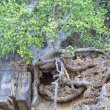
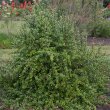
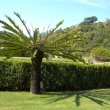
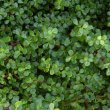
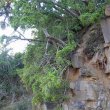
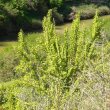
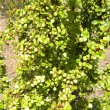


Comments
Elephant bush
Is elephant bush, portulacaria afra, in any way harmful to cats? Thanks!
Is Spekboom harmful to cats?
Hi Lisa
I shouldn't imagine so. I have not found or heard of any scientific research or indication that this plant is harmful specifically to cats, or for that matter any domestic or wild animal. It is heavily grazed by elephants and goats and is safe for medicinal use and human consumption. I know this doesn't answer your question but I would accept it as non-toxic. I take it your cat is eating it?
Kind regards
Lorraine
Position
Hi Lorraine, I'm wondering if my spekboom would prefer to be indoors, by a bright window, in the winter, and outdoors in the summer (in the shade, since I live in an apartment)? Is this switch-a-roo alright to do? I'm a plant rookie. Thanks so much, Veronica
Postnote
By the way, I should mention I live in southwest Oregon, where the weather is much like San Francisco, except the winters are colder (high of 48F in January.) Thanks again!
Spekboom in Oregan
Hi Veronica
I'm interested to know if this is this a bonsai or a potted shrub.
In either case, you can leave your spekboom outside all year. The spekboom is half-hardy, meaning that it can take some frost - down to 0C (32F) and it also copes with very cold winds. However, it would probably do no harm to bring it inside as long as it gets enough light and the leaves do not get clogged with dust.
Spekboom is one of those plants that are very difficult to kill, other than by over watering or soggy soil, in which case they will rot. Give it less water during winter than in summer and let the soil get quite dry between waterings.
Kind regards
Lorraine
Frost
We live in the northern pasts of the northern cape. We had black frost and our potted spekboompies are now brown and looking very dead. there are some sighns of new sprouts at the bottom. How do we care for it now? Do we just leave it or should be prune the dead-looking parts back?
Frost damage
Hi Marina
My apologies for not having replied to your query.
As it is a bit late now, I can only say that if this happens again, yes, cut off all the damaged parts as the frosted parts sometimes begin to rot.
Kind regards
Lorraine
Discuss this plant
Share knowledge, ask a question or give an experience.